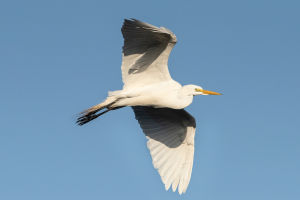Arctic Survival Experts
Polar bears are one of nature's greatest survivalists, thriving in the frigid, icy conditions of the Arctic.
These magnificent creatures have evolved a range of unique adaptations that allow them to endure extreme cold, scarce food, and long, dark winters.
From their dense fur to their strategic hunting techniques, let's dive into how polar bears have mastered life in one of the harshest environments on Earth.
Insulated for the Cold
The first thing that stands out about polar bears is their thick, white fur. It's not just for camouflage—this double-layered coat is a key component of their survival. The dense underfur traps warm air close to their skin, while the longer guard hairs, which are hollow, provide additional insulation. This two-layer system helps them maintain a stable body temperature even when the air temperature drops below -30°F (-34°C).
Beneath their fur, polar bears have a thick layer of fat, or blubber, that can be up to 4 inches (10 cm) thick. This blubber acts as an extra layer of insulation and energy storage, which is crucial during times when food is scarce. When swimming in icy waters, the blubber protects their organs and minimizes heat loss, allowing them to stay active for long periods without freezing.
Powerful Paws for Ice and Water
A polar bear's paws are designed to handle both icy terrain and open water. Their broad, slightly webbed paws work like paddles when swimming, making them strong and efficient swimmers capable of covering vast distances. Some bears have been known to swim up to 60 miles (97 km) in a single stretch! On land, their large paws distribute their weight evenly, helping them walk across thin ice without falling through.
The pads on their paws are covered with small, soft bumps known as papillae, which create friction and prevent slipping. Additionally, their sharp claws provide grip when climbing icy slopes or catching slippery prey like seals. With this unique combination of features, polar bears can easily traverse the ice and snow, making them formidable hunters on both land and sea.
A Keen Sense of Smell and Silent Stalkers
One of the polar bear's most powerful tools is its nose. They have an extraordinary sense of smell, capable of detecting seals nearly a mile (1.6 km) away or buried under three feet (1 meter) of snow. This keen olfactory ability is crucial for finding food in the vast, frozen wilderness where prey is often hidden.
Once they locate a potential meal, polar bears use a silent stalking technique to sneak up on unsuspecting seals. They patiently wait by seal breathing holes for hours, sometimes even days, until a seal surfaces for air. With lightning-fast reflexes, they strike, pulling their prey out of the water with their powerful forepaws. This patience and precision make them one of the Arctic's top predators.
Conserving Energy in Harsh Conditions
Surviving in the Arctic isn't just about finding food—it's also about conserving energy. During times when prey is scarce, polar bears can enter a state similar to hibernation called "walking hibernation." While they remain active, their metabolism slows down significantly, allowing them to use less energy. This adaptation is crucial during the summer months when sea ice melts and hunting becomes much more challenging.
In addition, polar bears tend to move slowly and deliberately to avoid overheating. Despite living in such a cold environment, they are so well-insulated that overheating is a genuine risk. They'll often take breaks, swim to cool off, or even dig into the snow to regulate their body temperature.
A Master of Adaptation
Polar bears have developed many other fascinating traits that help them survive in their frozen home. For example, they rely heavily on sea ice for hunting seals, their primary food source. With the ongoing changes in the Arctic due to global warming, polar bears are showing remarkable resilience by traveling longer distances to find stable ice or changing their hunting habits.
These adaptations not only highlight the polar bear's status as a true Arctic survivor but also emphasize how intricately they are tied to their environment. As climate change continues to reshape the Arctic, the survival of polar bears depends on their ability to adapt even further to rapidly changing conditions.
Polar Bear Adaptations
Video by Polar Bears International
Polar bears are more than just iconic Arctic creatures; they are marvels of evolution, perfectly adapted to survive and thrive in a world of extreme cold and relentless challenges. Their thick fur, insulating blubber, powerful paws, and exceptional hunting skills are just a few of the traits that enable them to conquer their icy domain.
However, as their environment changes rapidly due to climate shifts, the polar bear's continued survival depends not just on these incredible adaptations, but also on the preservation of their Arctic habitat. Without it, even the most perfectly evolved survivor may face an uncertain future.


